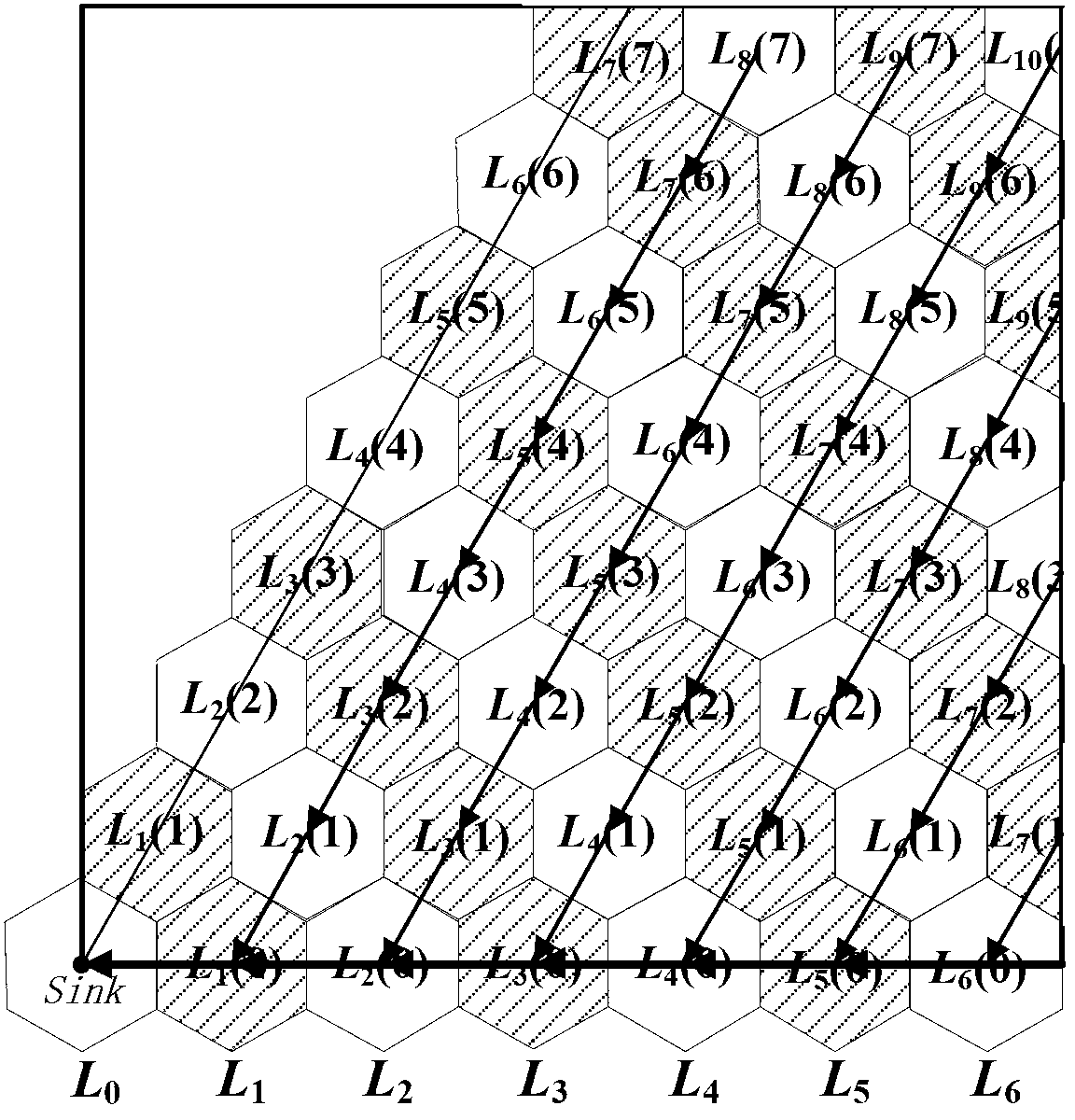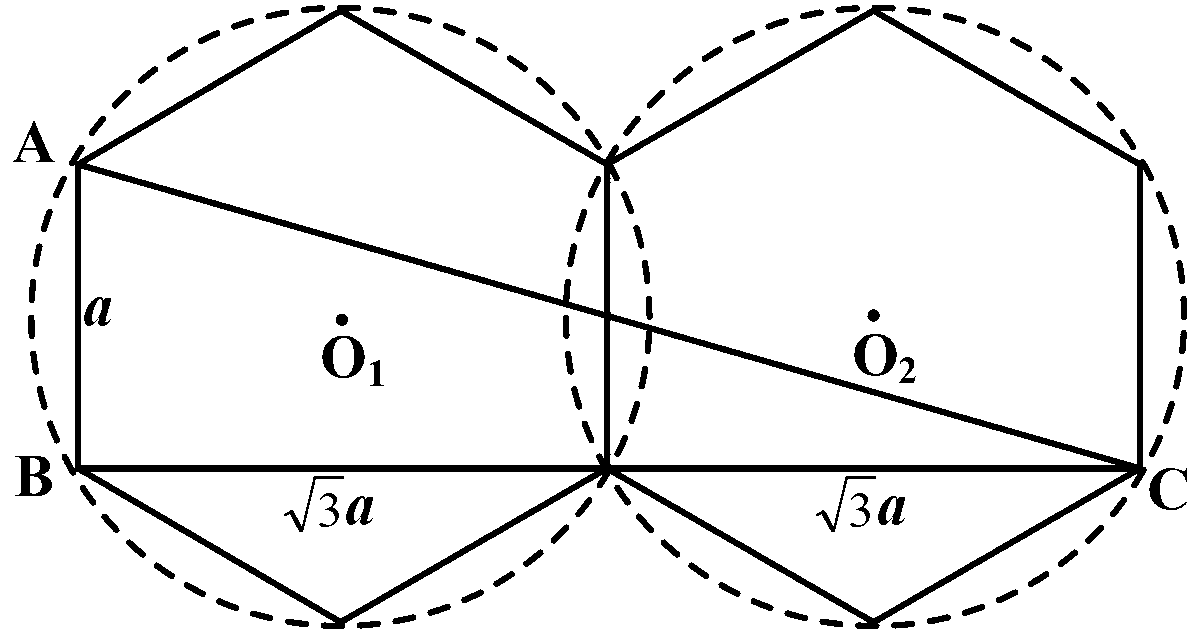Wireless sensor network clustering routing method based on hexagonal regional division
A wireless sensor and area division technology, applied in the field of network communication, can solve problems such as high maintenance costs, uneven energy consumption between nodes, and unpredictable energy consumption of nodes
- Summary
- Abstract
- Description
- Claims
- Application Information
AI Technical Summary
Problems solved by technology
Method used
Image
Examples
Embodiment Construction
[0053] figure 1 Describes the scenario when the Sink node is located at the center of the network. The sensor nodes are distributed in the network with uniform probability, and the specific implementation method is as follows:
[0054] 1) Initially, the basic parameters of the sensor network are as follows:
[0055] The sensor network size is 500m*500m
[0056] The number of wireless sensor nodes is 1000
[0057] The Sink node is located at coordinates (250,250)
[0058] The side length of the hexagonal grid is 40 meters
[0059] The maximum transmission distance within the cluster of wireless sensor nodes is 80 meters
[0060] The maximum transmission distance between clusters of wireless sensor nodes is 144 meters
[0061] 2) The sensing area is divided into six main "sectors" by six baselines starting from the Sink node. The angle formed by any two adjacent baselines is 60 degrees, and the entire area is divided by a hexagonal area ( figure 1 ). Each wireless sensor...
PUM
 Login to View More
Login to View More Abstract
Description
Claims
Application Information
 Login to View More
Login to View More - R&D
- Intellectual Property
- Life Sciences
- Materials
- Tech Scout
- Unparalleled Data Quality
- Higher Quality Content
- 60% Fewer Hallucinations
Browse by: Latest US Patents, China's latest patents, Technical Efficacy Thesaurus, Application Domain, Technology Topic, Popular Technical Reports.
© 2025 PatSnap. All rights reserved.Legal|Privacy policy|Modern Slavery Act Transparency Statement|Sitemap|About US| Contact US: help@patsnap.com



